Rex McCandless: Inventor who revolutionised motorbikes
- Published
Rex McCandless
He is one of the UK's less celebrated inventors, but his remarkable talents revolutionised the motorcycle.
Rex McCandless was a well respected motorbike racer who transformed the structure of vehicle, with his design forming the base of most modern bikes.
The County Down engineer is being honoured with a blue plaque later on Thursday, highlighting his achievements not just in mechanics but also in racing.
Born in 1915 in Hillsborough, McCandless's passion for mechanics began when he was a teenager and was gifted a 1923 Raleigh motorcycle by his aunt.
As he began to experiment with the machinery, he expanded his bike collection with money earned from servicing lorries.
Having ignited his need for speed, McCandless began racing motorbikes.
In 1940, he won the 500 Road Race Championship at Phoenix Park, but it was after his road racing career that he turned his hand to the machines' construction.
The featherbed
In 1943 in Belfast, Rex started his own construction machinery business with his brother Crombie, and it was here that his revolutionary inventions would later take form.
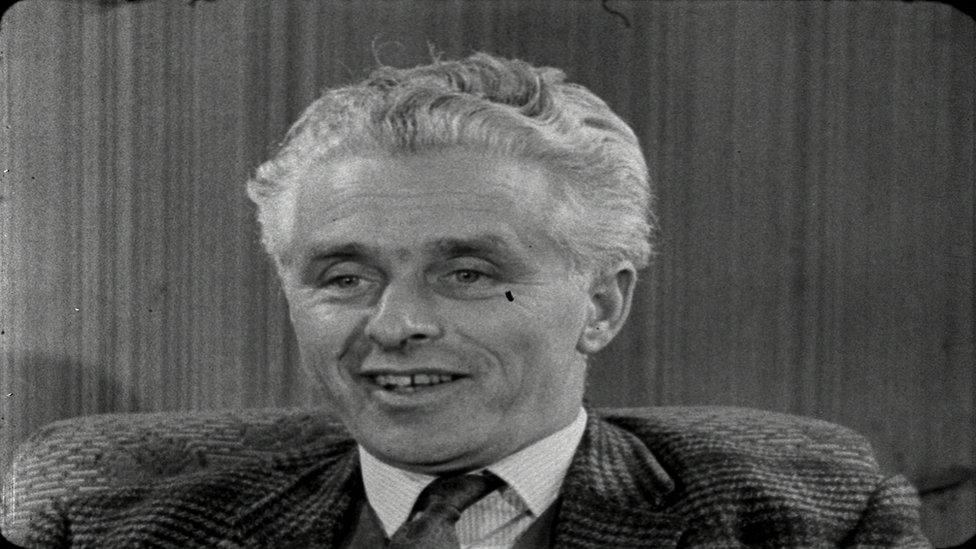
As McCandless began to develop his own inventions, he produced a design in 1949 which would eventually become the most famous motorcycle frame in the world.
The machine included a frame which was stiffer and thicker than other motorbikes of the time, which often looked more like bicycles.
It was a revolutionary creation, according to Les Jennings, a lifelong friend of McCandless and author of his biography, To Make a Better Mousetrap.
"Riders felt more comfortable on the motorcycle, it held the roads better than other machines," Mr Jennings told BBC News NI.
"Other companies would go on to copy Rex's type of suspension."
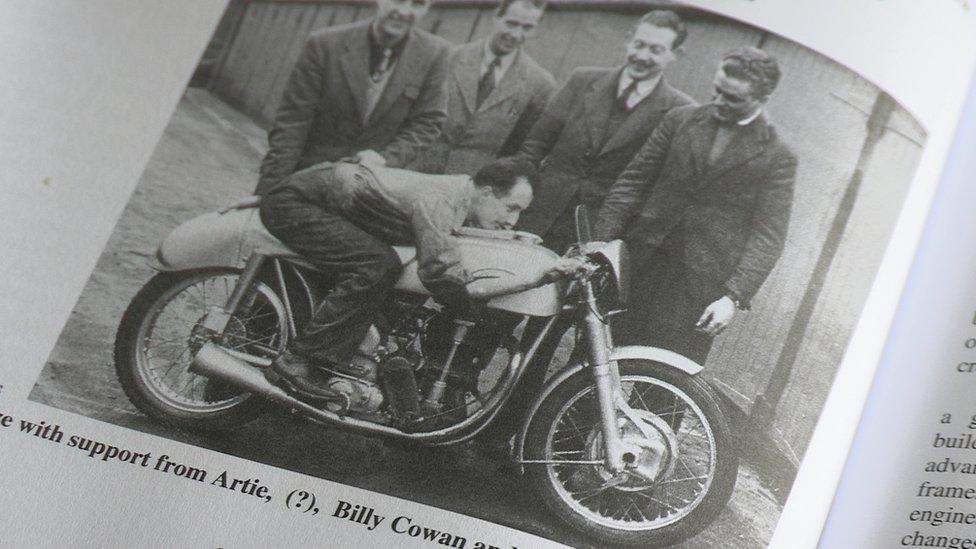
The famous featherbed frame inspired most modern-day motorbikes
The new design eventually became known as "the Featherbed".
"The name was given to the machine by the famous racer Harold Daniell," said Mr Jennings.
"He said riding that particular machine was like being on a featherbed as it was so smooth, and the name just stuck."
The Norton Motorcycle Company was impressed with the featherbed and commissioned McCandless's work.
This frame structure is still seen on most modern-day motorcycles.
'Extremely dangerous'
Norton approached McCandless asking him to work for the firm exclusively, but he preferred to work independently.
"He never wanted to work for a company... he wanted to continue experimenting in Belfast," said Mr Jennings.
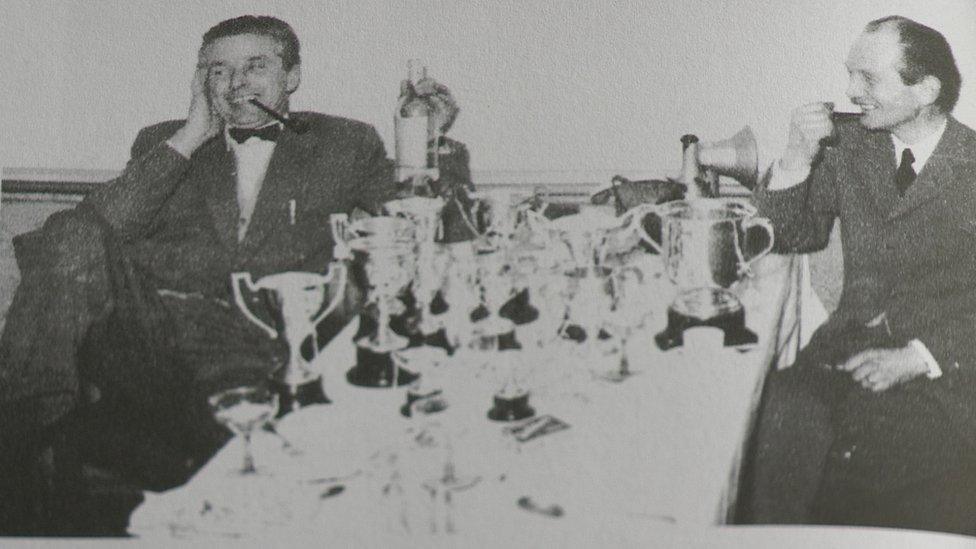
McCandless (pictured left) put his life and soul into his work, friends say
"He would seldom take advice from others and in engineering terms he wanted to prove and test things for himself."
And that he did. McCandless would test his own designs on the road, which was often seen to be a dangerous move.
He would "hammer a motorcycle round the Ravenhill Road area at a very high speed, which was extremely dangerous," as Mr Jennings put it.
"He was very committed and put his life and soul into it."
The 'mule'
In the 1950s, McCandless began to work on cars which were predominantly for military use, in conjunction with fellow mechanic Harry Ferguson, famous for his role in the development of the modern tractor.
During this time, he and Mr Jennings created the "mule" - a vehicle designed to replace the Land Rover.
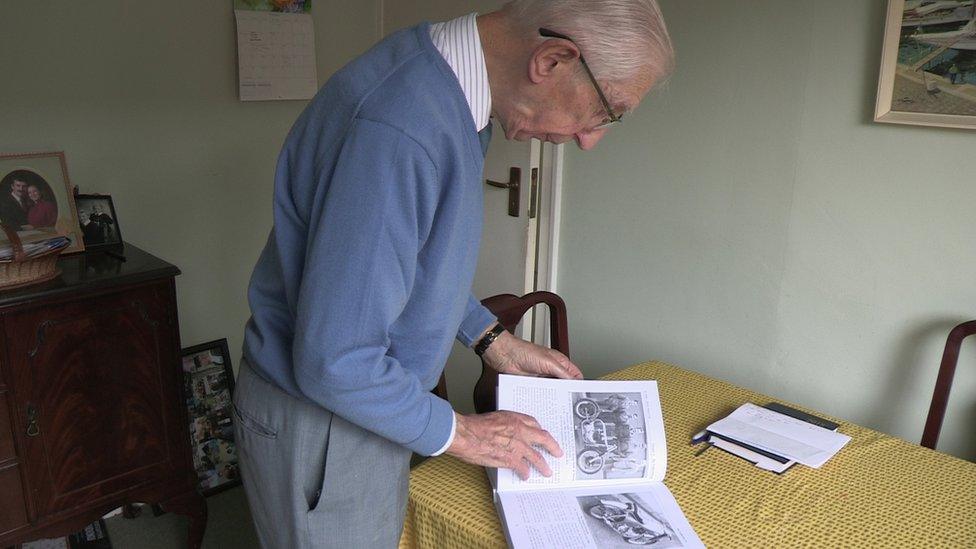
Les Jennings was a life-long friend of Rex McCandless
"It was to be a light vehicle to seat four soldiers and be able to go anywhere, like a mini-tank," explained Mr Jennings.
The vehicle received a lot of interest from the Army, but due to a dispute, the project fell through.
"There was a disagreement, with Ferguson wanting Rex to work for him exclusively and Rex was not having any of it" said Mr Jennings.
"He saw that if he was going to work for Ferguson, he would have to do everything he said and he was not that sort of guy."
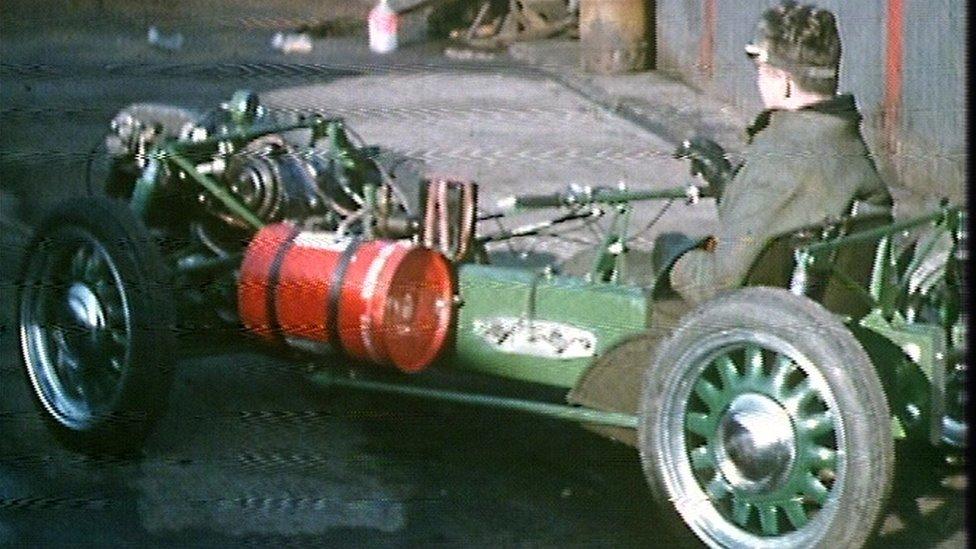
The mule was never fully developed
The autogyro
Expanding his mechanical skills further, McCandless began experimenting with aviation, learning to fly from Newtownards airport.
Using a Triumph motorcycle engine, he created the McCandless Autogyro, a one man portable helicopter.
The aircraft inspired autogyros that were famously featured in the James Bond film You Only Live Twice.
The machine can be seen today at the Ulster Folk and Transport Museum.

Rex and his autogyro creation
In his later life, McCandless moved to the village of Killough, living in an old railway station which he refurbished.
He died in 1992 at the age of 77, but his inventions continue to influence the world of mechanics.
"He was just such a character, even beyond engineering," said Mr Jennings.
"Everyone had something to say about the remarkable Rex."